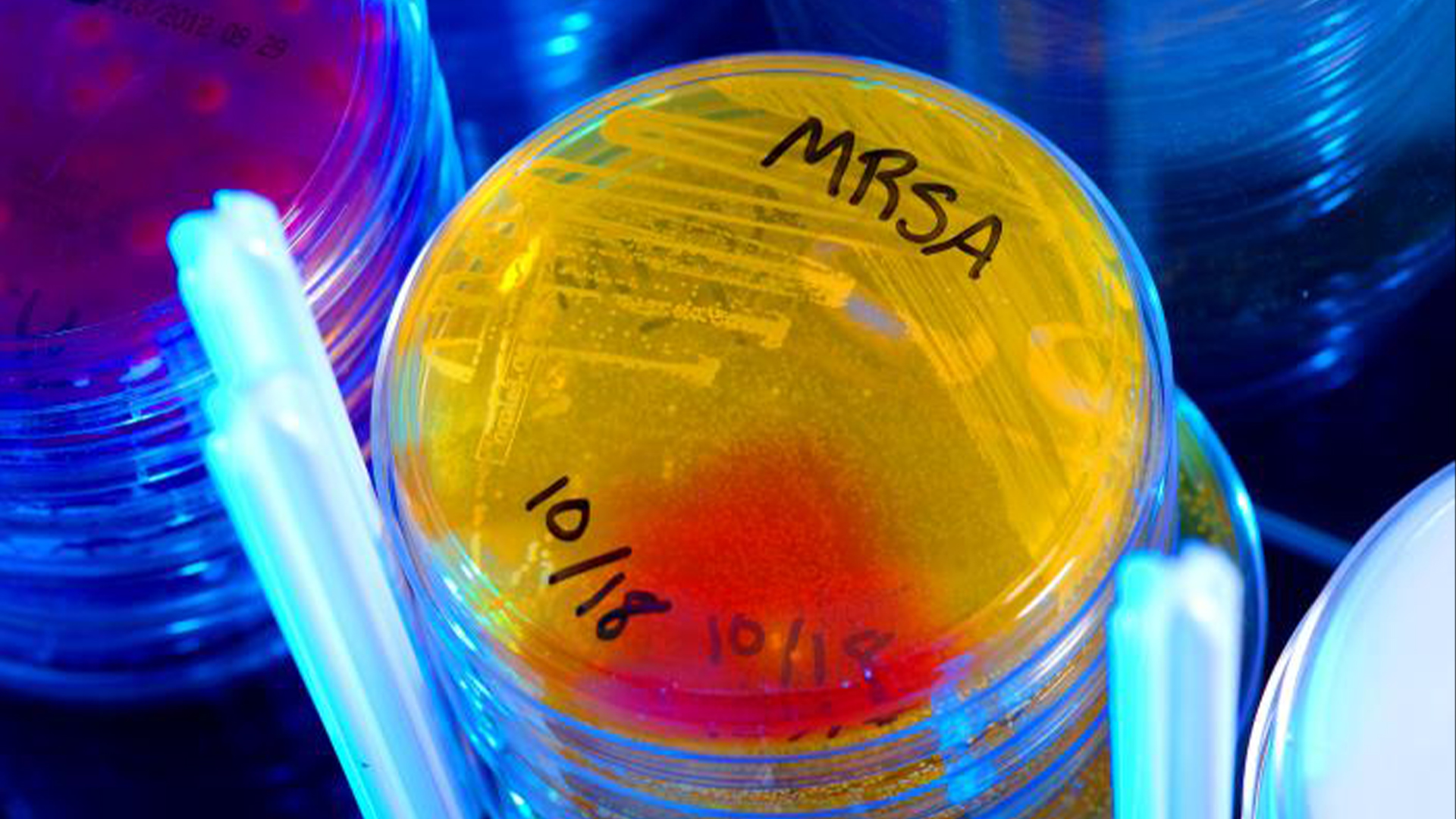
Hospitalization is supposed to make people well. But on a given day, an estimated 1 in 31 hospitalized patients contracts an infection from the hospital itself, and tens of thousands die annually. Many of these infections are antibiotic-resistant, and treating them contributes to the evolution of new "superbugs."
But now, researchers have a new idea for preventing hospital-acquired infections: a vaccine that puts the immune system on short-term high alert for a broad array of pathogens.
The vaccine, so far tested only in mice, activates the innate immune system, the body's first line of defense, according to a study published Oct. 4 in the journal Science Translational Medicine. The innate immune system is not specific to any particular pathogen, and its protection tends to fade faster than that of the adaptive immune system, which "remembers" viruses and bacteria it has encountered in the past. (Most vaccines train the adaptive immune system to fight off specific diseases, such as the seasonal flu or COVID-19.)
But for hospitalized patients, broad and short-term protection is needed most, said Brad Spellberg, the senior study author and chief medical officer at the Los Angeles General Medical Center.
"It solves a problem that traditional vaccines have not been able to solve," Spellberg told Live Science.
Related: Dangerous 'superbugs' are a growing threat, and antibiotics can't stop their rise. What can?
There are too many potential hospital-acquired pathogens to reasonably vaccinate incoming patients for each individual bacterium or fungus, Spellberg said. And in any case, traditional vaccines require time to activate adaptive immunity, and hospitalized patients need immediate protection.
The researchers stumbled across the idea for the new vaccine more than 15 years ago while looking to develop a traditional vaccine for Staphylococcus aureus, a common source of hospital infections. Certain strains of the bacterium, known as methicillin-resistant S. aureus (MRSA), are resistant to common antibiotic treatments.
The researchers were struggling to find a combination of bacterial proteins that would protect against staph infections in the blood, so they began adding a series of compounds called adjuvants to their formulation. Adjuvants are ingredients that broadly boost the immune response to a desired target.
Eventually, the researchers found a combination of three bacterial proteins and three adjuvants that worked in animal studies. But during testing, they found that giving mice a vaccine with only the three adjuvants was just as protective as giving them the vaccine with proteins and adjuvants combined.
"We were like, 'Whoa, whoa, whoa, what is going on here?'" Spellberg said.
What was going on, another decade of testing revealed, was that the vaccine was not specifically targeting the staph proteins. Rather, it was boosting the activity of the innate immune system more broadly — and that was enough to protect the mice from staph infection.
"It's an important and exciting concept for a vaccine," said Marcela Henao Tamayo, an immunologist at Colorado State University who was not involved in the new study.
The three adjuvants — aluminum hydroxide, monophosphoryl lipid A, and fungal mannan — protected mice against not only S. aureus but also strains of other common hospital-acquired pathogens with various degrees of antibiotic resistance, such as Enterococcus faecalis, Escherichia coli, Acinetobacter baumannii and Klebsiella pneumoniae. The vaccine also protected against the fungi Rhizopus delemar and Candida albicans, which also frequently affect hospitalized people.
Related: Cleaning product residues may be driving a deadly superbug's antibiotic resistance
Aluminum hydroxide and monophosphoryl lipid A are already used in vaccines and approved by regulatory agencies in both the U.S. and Europe, Spellberg said. Mannan, a component of fungal cell walls, is not yet an approved vaccine adjuvant, but it has been tested in humans in other medications without apparent safety issues, he said.
The research also found that the key reason the adjuvant-only vaccine worked was that it activated macrophages, immune cells that engulf and destroy foreign invaders. The researchers also observed other changes in the immune system, such as an increase in anti-inflammatory immune proteins called cytokines, and a decrease in pro-inflammatory cytokines. Though all the mechanisms aren't clear, this ratio has been linked to better survival after infection in previous studies, the researchers wrote.
In mice, the vaccine's protection persisted for 28 days.
Giving this vaccine to patients upon hospitalization or before outpatient surgery could reduce the rate of hospital-borne infections and help combat the problem of antibiotic resistance, study co-author Jun Yan, a doctoral student in microbiology at the University of Southern California.
"By reducing the infection rate in the hospital, we're also reducing the new emergence of antibiotic resistance, because we can also reduce the use of antibiotics in hospitals," Yan told Live Science.
Human testing is the next step. Other vaccines, such as the live tuberculosis vaccine, have long been known to trigger an innate immune response in addition to raising the body's guard against specific germs, Henao Tamayo, who studies those vaccines, told Live Science. But getting a nonspecific vaccine approved by the Food and Drug Administration (FDA) is new territory, Spellberg said. The research team is currently in talks with the FDA about what kind of testing would be needed, and they hope to begin clinical trials in 12 to 18 months.
"I think what they have already developed is highly promising," Henao Tamayo said, "and we could learn a lot from human studies."






